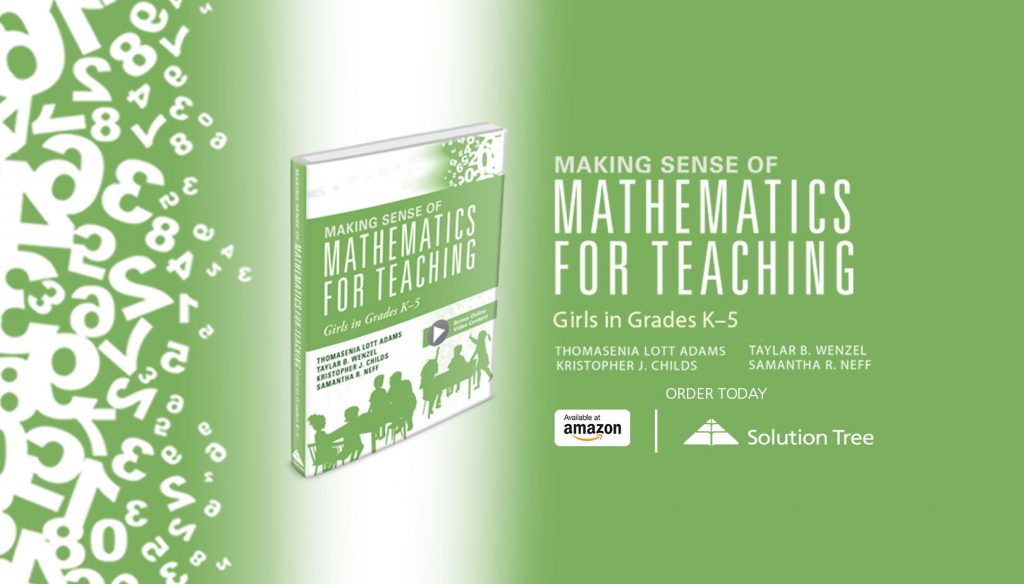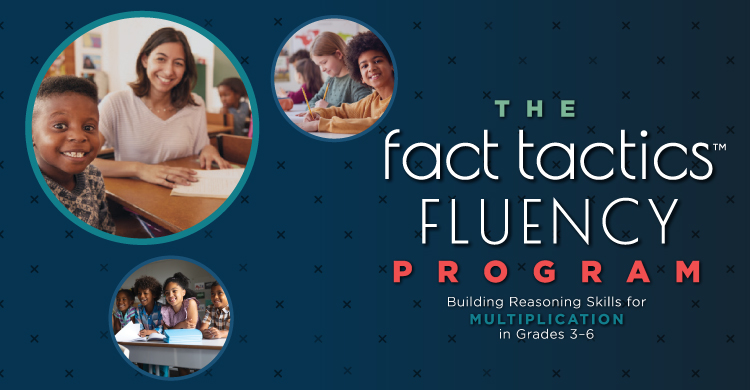Based on Making Sense of Mathematics for Teaching Girls in Grades K–5
Sometimes it is strange how a situation turns out. With data on hand, we often think we can accurately anticipate what might happen. However, the twists and turns of life regularly lead us from uncomfortable challenges to pleasant surprises. When I was in fourth grade, I had a terrible experience during a mathematics class. I was called out. I was embarrassed. I was ashamed. I was driven to tears.
I was in class, and all of the students were seated in one of the front-facing rows. I was sitting next to a student I’ll call Summer. The teacher, who I’ll call Mrs. Thomas, had given us an assignment to do. I think it was a fractions worksheet. I remember getting to an exercise that I didn’t really understand. The class was really quiet as always. The teacher instructed us not to work together; in fact, she said working together was against the rules. Well, I decided to take a chance anyway. I leaned over to Summer and asked her if she could help me.
Before Summer could even respond, Mrs. Thomas was upon us. She asked what we were doing, and I told her that I was asking Summer for help on one of the problems. Mrs. Thomas reminded me that asking other students for help was against the rules. Mrs. Thomas then went back to her desk. When she returned, she was holding “the ruler of rules.” She instructed me to put out my hand and proceeded to give me five whacks with the ruler. My hand was hurt. My feelings were hurt.
I didn’t like that this thing called mathematics was confusing. I also associated the pain of corporal punishment with seeking help for my confusion. Later, when I saw other students “getting it,” I felt that perhaps mathematics just wasn’t for me, especially if I couldn’t even talk to anyone about mathematics. As it turns out, fourth grade was the beginning of what would be a tough relationship between me and mathematics for years to come.
Fast forward to today and, after many twists and turns, the little girl has grown up, and I am very fortunate to have a love for mathematics is that is unbreakable! This is what I want for all students.
When my coauthors and I conceived our new book, Making Sense of Mathematics for Teaching Girls in Grades K–5, we were solely focused on contributing a voice to mathematics education that would inform everyone on how to strengthen girls’ experiences as learners of mathematics. Why girls? Well, because talk abounds about how girls lack interest in mathematics; how girls are underrepresented in science, technology, engineering, and mathematics (STEM) contexts such as high-level mathematics courses; and how, subsequently, females are underrepresented in STEM fields. Why girls? Because so many people perceive girls as not being as good at mathematics as boys.
Perceptions of Math Achievement
Let’s see what you think. Make a list of seven students you know to be good at mathematics. Now answer these questions:
- What does “good at mathematics” mean to you?
- How many of the students you listed are girls?
If you have more girls than boys on that list, wonderful, but keep reading! If you have fewer girls than boys on the list, predictable, but keep reading! If you have no girls on the list, not surprising, and definitely keep reading!
As we facilitated professional development for teachers of mathematics across all grades and in districts across the nation, we heard comments about girls not being interested or motivated in mathematics or girls not being as good in mathematics as boys.
Of course, we have our own teaching experiences in various contexts to consider, but we also searched the literature and results from high-stakes tests on this topic. In some contexts, boys achieved higher than girls. In some contexts, girls achieved higher than boys. On some assessments, girls and boys performed similarly. So, pick a side, and you can find some support for your position.
My colleagues and I wondered about why girls sometimes “get the short end of the stick” when it comes to talking about mathematics achievement. What is happening is that the perception of boys being better at mathematics than girls overall, across the board (whether any evidence says so or not), is still very strong?
Unfortunately, when teachers—or even girls themselves—hold this perception, it influences the kind of experiences girls have in mathematics. Perceptions drive action. Therefore, we can expect that teachers who have a perception that girls can achieve in mathematics will give girls opportunities where they can achieve in mathematics. Girls who have a perception that they can achieve in mathematics will allow themselves to engage in risk-taking in the classroom to take advantage of opportunities to achieve in mathematics.
Perceptions about Girls Studying Math
So, what are your perceptions about girls studying mathematics? Here’s a little quiz for you: Select all of the statements you think are true:
- Girls prefer reading over mathematics.
- Girls need to study harder than boys to be successful in mathematics.
- Girls who excel in mathematics usually have fathers who are good in mathematics.
- Girls do better in mathematics when the problems are about things girls like.
- Girls who excel in mathematics are usually less popular than others.
So, what do you think? What you think matters! Your perceptions will drive you in one direction or the other. We hope your perceptions will drive you to support actions that support girls to be successful in mathematics.
In Making Sense of Mathematics for Teaching Girls in Grades K–5, we provide many possibilities for ways to positively impact girls studying mathematics. At the core of the possibilities is the idea that girls, like all students, need to be part of a community of learners that values the growth and achievement of each learner and provides meaningful content, high-quality instruction, and formative assessment so that learners can thrive. My coauthors and I also believe that girls benefit when priority is given to make sure equity is valued and sought in the learning environment, so girls and boys are given the opportunity and support needed to be successful in mathematics.
Not only do we need to consider our perceptions and to think of possibilities for things we might do to support girls (and all students) to be successful in mathematics, we also have to give attention to our priorities. For instance, do we design instruction so that girls are purposely given opportunities to be confirmed as risk-takers in the same ways that boys are confirmed as risk-takers? Are we committed to avoiding presenting certain kinds of mathematics as better for girls, such as tasks with contexts for cooking, and certain kinds of mathematics as better for boys, such as tasks with contexts for racing or building? Can we stand strong against ideas that girls just would rather do “girl” subjects like writing and literature while boys are promoted to do “boy” subjects such as science and mathematics?
Making Sense of Mathematics for Teaching Girls in Grades K–5 reflects our position that mathematics is for everyone and that each and every girl deserves an opportunity to be successful in mathematics.








